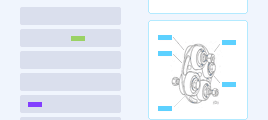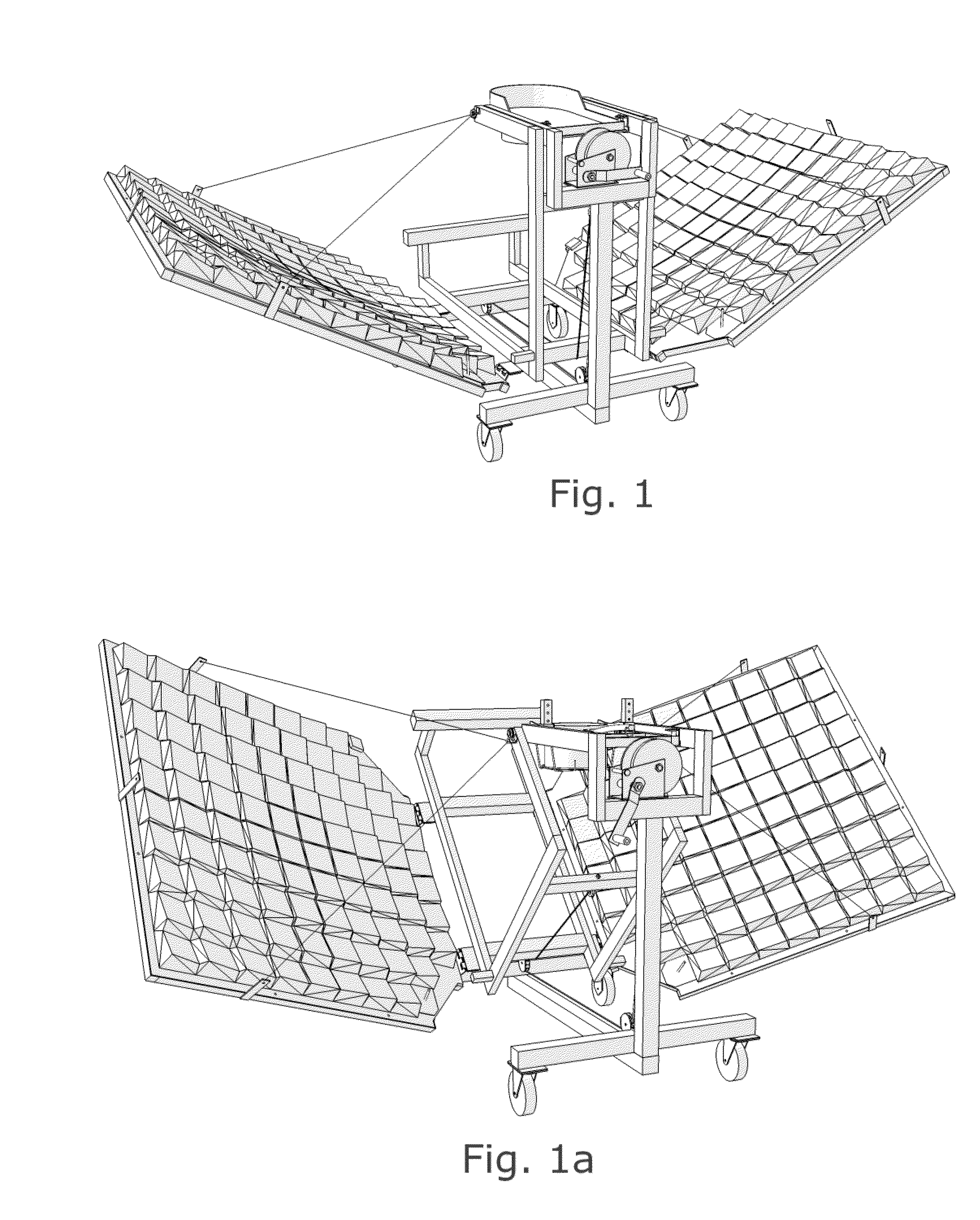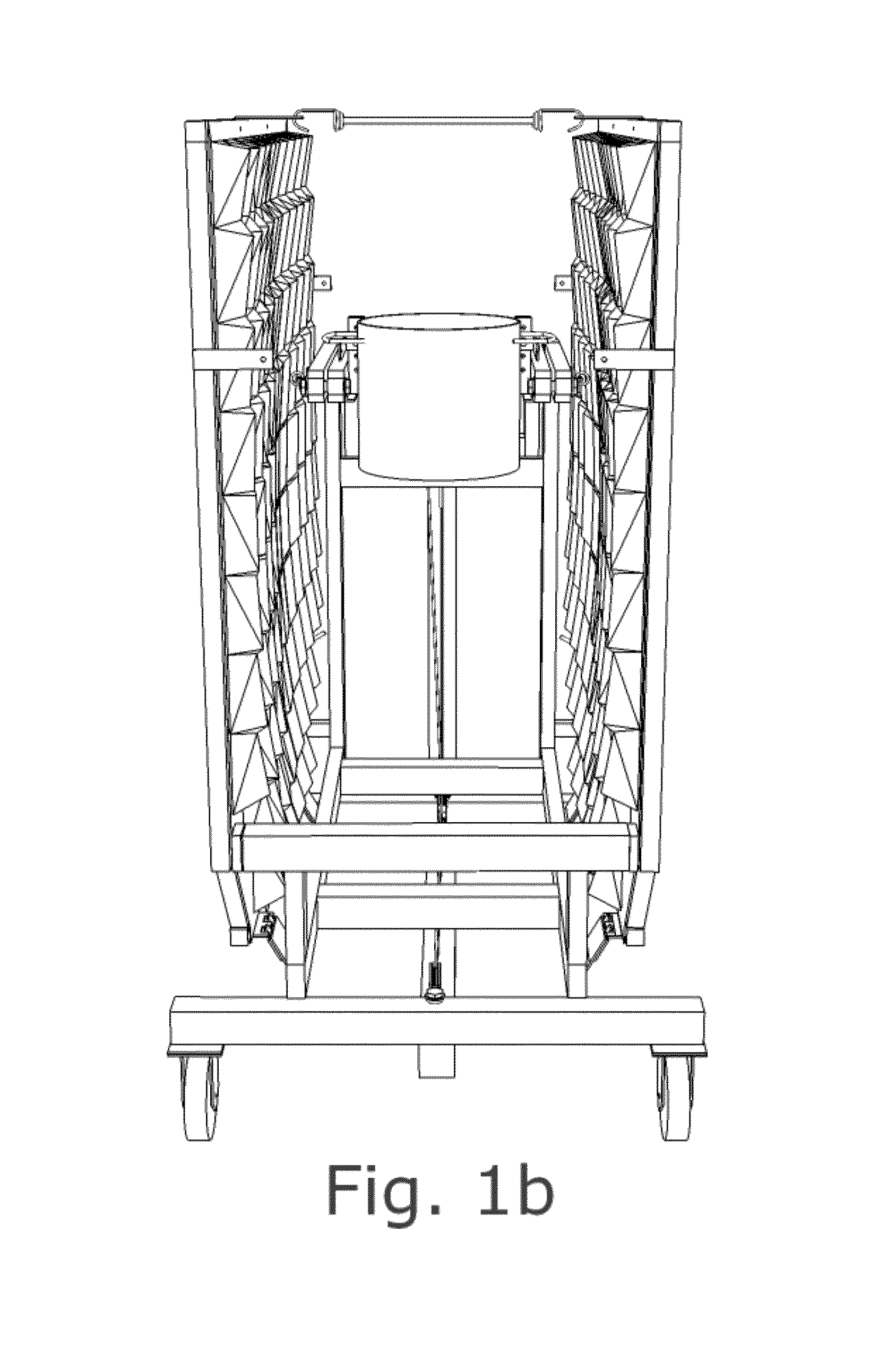Energy consumers in some areas have installed local systems, which avoid the transmission losses inherent in distribution from centralized plants, but usually operate at the lower efficiency of photovoltaic (PV) conversion.
Efforts have been made to encourage use of solar cookers in these areas, with limited success.
Populations with a lifestyle and economy that are more dependent upon fossil fuels will suffer greater stress, as those fuels become more costly.
Development and implementation of apparatus for
local scale, distributed
solar thermal energy collection and use confronts many of the same difficulties as large-scale installations.
Apparatus for local concentration of
solar energy offers a greater range of uses than non-concentrating solar collectors, but presents a greater challenge for design and
cost efficiency.
Beyond the costs of materials, manufacturing and maintenance, development of apparatus suitable for home, farm, or small business use also contends with issues such as
space requirements, safety, portability and ease of use.
However, the incident angle of
sunlight to a lens or reflector that is fixed in position will change continuously as the earth turns, thus changing the resulting reflective angle.
Maintenance of automated mechanical solar tracking has been a significant cost barrier for large, centralized solar thermal electric generation facilities.
Concentrators with individually moving reflectors, even at a smaller scale, require a complicated mechanical infrastructure.
In dish type concentrators the
receiver and the user can cast shadows over reflector area in some designs, reducing efficiency.
Cooking vessels positioned over reflectors, or that must be lifted over them are more likely to may spill and spatter food upon the reflectors, also reducing efficiency.
The Ao Chi F800 reflective surface is not very durable, being a metallized
plastic film.
This unit is also limited in its reflector size and power, in favor of user access to the receiver.
User access to the receiver for cooking-related activity becomes more problematic as the size of reflectors is increased for greater
concentrator capacity.
Similarly, the challenge of providing a convenient way to perform manual solar tracking adjustments grows in proportion to reflector area.
However, these implementations still require costly, laborious and difficult fabrication techniques, or lack a surrounding structure that provides good ease of use.
Fabrication and
assembly is costly, the
paraboloid section shape is rather bulky, and the user approach to the focus becomes difficult when the sun is lower in the
sky.
The location of the mechanism is inconvenient and possibly hazardous to the user, as it requires reaching over the
focal area past a hot cooking vessel.
Azimuth adjustments require tilting the entire apparatus to pivot it upon its one axle or skidding its base foot sideways, risking
spillage from the vessel at the focal area.
The Iron Butterfly's reflector arrays are in a trapezoidal shape that does not maximize reflector aperture relative to outer dimensions of the apparatus, in use or in the (folded) storage position.
Mounting and aligning the Fresnel array of mirrors requires a complex and heavy backing structure.
A backing plate for each flat reflector in the array must be aligned and attached to framing with individual welded supports, making fabrication laborious and costly, and adding substantially to the weight of the apparatus.
Though some success has been demonstrated, the difficult and laborious multi-step process is vulnerable to error and imprecision at various stages.
But flexing and
distortion of the non-braced portion of the
carriage may reduce focal precision and
usable energy, and the facilitation of user proximity to the focal area increases the likelihood of operator
exposure to concentrated
solar energy.
The bracing location also limits the range of
carriage travel; with the sun directly overhead, proper focus requires compensatory tilting of the entire apparatus.
The Iron Butterfly's
spooling mechanism for cable-controlled adjustment of reflector altitude is located near the focal area, similar to the Papillon design, so use is difficult and possibly hazardous.
However, positional adjustments are difficult and uncomfortable to perform accurately in this manner, further compromising ease of use and general
efficacy of the
concentrator.
Suspension lines to hold the Iron Butterfly's reflector panels in operating position are attached to the panel carriage asymmetrically and lack a means to maintain equal tension between them.
This may contribute to flexion of the reflector panels with consequent focal imprecision.
 Login to View More
Login to View More 


